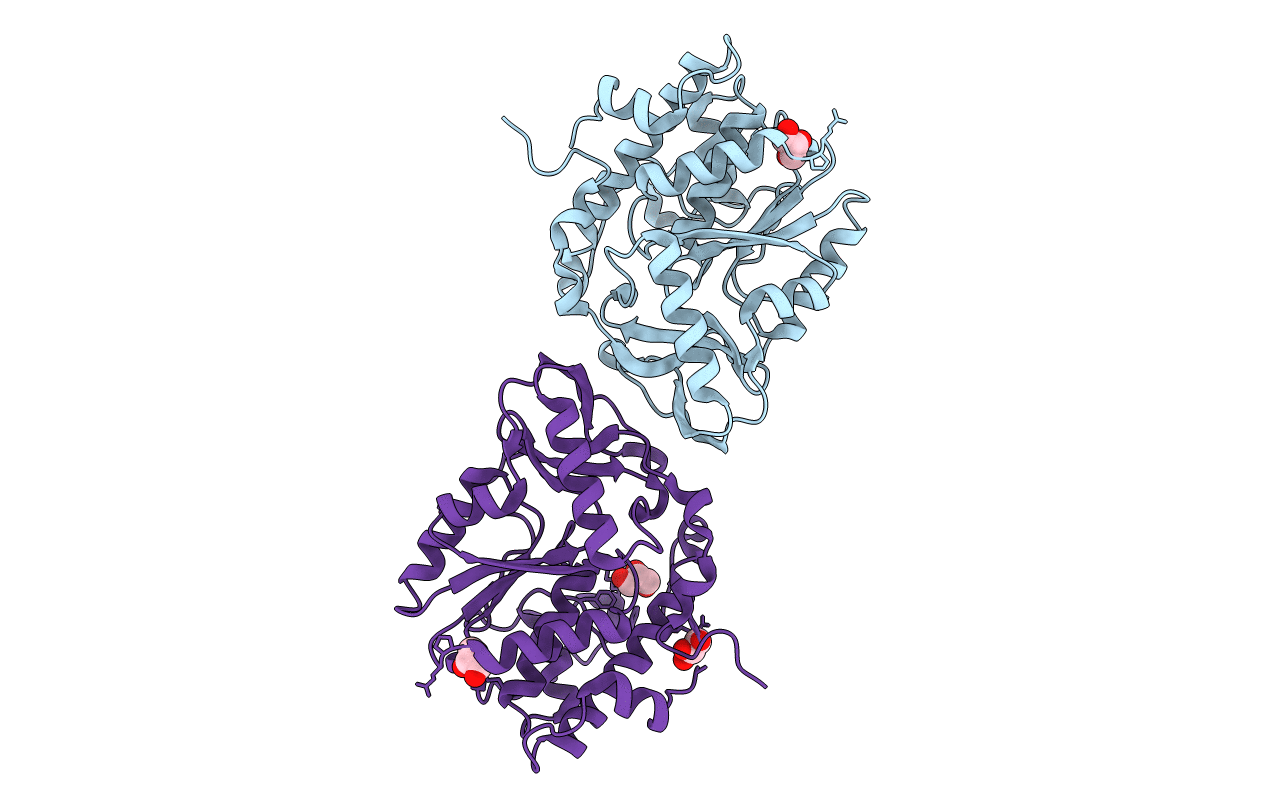
Deposition Date
2007-05-07
Release Date
2008-05-13
Last Version Date
2023-08-30
Entry Detail
PDB ID:
2PSZ
Keywords:
Title:
Structure of the PTP-like Phytase expressed by Selenomonas ruminantium at low ionic strength
Biological Source:
Source Organism:
Selenomonas ruminantium (Taxon ID: 971)
Host Organism:
Method Details:
Experimental Method:
Resolution:
2.00 Å
R-Value Free:
0.21
R-Value Work:
0.18
R-Value Observed:
0.18
Space Group:
P 1 21 1


